Not all dirty words have four letters. Take ‘property developer’ for instance. Mention them and an image tends to spring to mind of a ruthless, hard-nosed older male, a profit-junkie in soft-soled, bright white shoes. They’re expectations property developer, Linda Gregoriou, loves to confound.
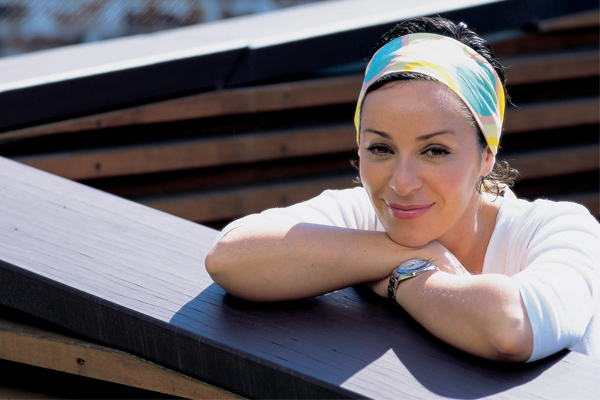
April 14th, 2014
Gregoriou is affable, attractive and energetic, well-connected and commercially savvy and a frisky woman with impeccable academic qualifications and broad experience. She runs her own small company, the FTB Group, which she formed in 1997. Along the way she has won a variety of awards – the Multiplex Award for Vision in 1999, the Lend Lease Development Award in 1999 and the Dulux Award for interior design in 2002.
She was a key figure in the NSW Government’s masterplan for the Homebush Bay Olympic site. She has a substantial Aboriginal art collection and holds positions on several arts boards: the National Gallery of Australia; Jirrawan Arts in the Kimberley; the Ivan Dougherty Gallery (COFA, UNSW); the AGNSW’s Contemporary Benefactors Program, the MCA, and the New England Regional Art Museum.
For some years Gregoriou taught a Masters program in Urban Design and Development at UNSW. She has also appeared on ABC TV’s New Inventors, and on its arts program, Critical Mass. And she has twice ventured into publishing with two co-productions – a highly-regarded international journal on urban issues, Polis, and a photographic book on surfing, Sea Gods.
Despite wearing a lot of hats, she prefers the ‘property developer’ descriptor and construes every step in her career as part of a logical and linear progression to that end.
“I’ve always been passionate about the city and about urbanism,” says Gregoriou, as she speaks of growing up in the Melbourne suburb of Brighton, with a Greek-Cypriot economist and property developer father and an artistic Anglo-Celtic mother. She considers she has inherited the best attributes of both sides of the family: the commercial acumen and emotional responsiveness of one, and the visual appreciation and rationality of the other.
She remembers as a child going to auctions with her father, where she learnt that “there’s an art form in bidding”. So, becoming a developer felt natural. “I understood it. I bought my first property when I was 22, sold it, made a profit, and it multiplied from there.”
But it’s not an easy occupation and she says she finds it odd that people who have made money in other areas switch to property development. “I can never comprehend that. It’s like me turning round and saying, Oh I think I might take up dentistry and do root canal therapy.” Being a successful developer “is a highly specialised way of functioning in the city. I felt as if I had to serve an apprenticeship before I embarked on it in any meaningful way.”
Gregoriou began by completing a double major in urban sociology and urban geography at Monash University. With a strong leaning toward the visual arts, she felt this aspect was missing from the social, economic and political picture of urbanism she had assembled, so she followed up with post-graduate study in urban design and planning. Between degrees, she spent 12 months as an inner-city real estate agent. “It was probably one of the best things I could have done, because it taught me how to negotiate. It also taught me the machinations of the property market.”
She went on to work as a strategic planner for the City of Port Philip, in Melbourne, and as an urban planner in private enterprise before moving “to Sydney. In 1994, together with her then partner, architect Dale Jones-Evans, Gregoriou co-founded, published and edited Polis, which presented ideas from some of the world’s leading thinkers on urbanism. “We looked at urban design and architecture, economics, geography, visual arts and the landscape – anything to do with cities but from a multi-disciplinary perspective.” This multi-disciplinary approach served her well when she took a job as an urban policy consultant with the NSW State Government’s then Property Services Group, which was responsible for a number of large development areas including the planning of the Homebush Bay Olympic site. Having worked closely with Managing Director of the Group, Brian Melloy, when he’d headed up Leighton Constructions, Gregoriou found in him a mentor. Here two of the fundamental themes she’d been promoting were realised. The first was her commitment to multi-disciplinary collaboration. The second was a conviction that good design adds value.
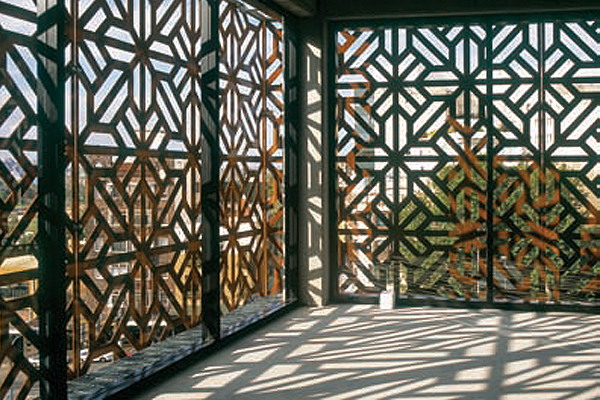
Art Wall Building, Kings Cross. Photo Willem Rethmeier
Under the auspices of Melloy, she established and directed an international design studio set up within the Property Services Group to prepare the masterplan for the Olympic site. “We invited the best designers in Australia and from around the world: transport lanners, economists, architects, artists, sound engineers… There were a lot of complex issues, plus the fact that the Olympics were just 16 days, but the area had to function post-Games as a viable part of Sydney. One of the really great bold gestures we [achieved] was to put an avenue down the Olympic site,” says Gregoriou, who was also instrumental in distributing architectural commissions to a larger variety of architects than had originally been the case. “It could have gone further than it did, but it was also about showcasing the best of Australian work.”
Having frequently bandied the ‘good design adds value’ idea about, Gregoriou felt the time had come to “put my money where my mouth is.” In 1995 she began her first warehouse development, the 1920s heritage listed St Francis Catholic School Hall, in innercity Sydney’s Surry Hills, which she and Jones-Evans converted into ten lofts. The project was extremely well-received and regarded as highly successful financially, aesthetically, in terms of habitation and heritage refurbishment.
Abandoning the consulting work she had been doing, Gregoriou says, “I decided I wanted to be in control of my own destiny.” Together with Jones-Evans, she then took on another Surry Hills warehouse conversion,(Ann Street) which was praised in the architectural press for its imagination, connection to its environment and sophisticated industrial style. The latest project completed, also designed by Jones-Evans, is the Art Wall Building on William Street, in King’s Cross. The boutique office building, enveloped in a steel mesh screen, is topped with a huge lightbox designed to bring a changing selection of artworks into the public realm. (The initial work is a painting by Aboriginal artist Emily Kngwarreye.) A striking addition to the streetscape, the project has won several awards. Gregoriou’s next development is a collaboration with developer Leon Fink – a new arts precinct just behind Sydney University in Camperdown.
Gregoriou controls her development projects both financially and creatively and as an extension of her persona. A primary objective is innovation in design. “I’m always looking for things that set the agenda, that are ground-breaking. For me it’s about quality over quantity.”
She believes that a single development – even if it’s as small as the Art Wall Building with its 100 metre square footprint – can encourage more widespread adoption of good design by setting a new agenda. Raising the bar in both planning and design inevitably impacts on councils, other landholders and developers working in the area.
Given the trend for big development projects to be designed by high-profile architects she accepts some headway has been made. “I think the average developer has become more aware, although it hasn’t gone far enough. I hate mediocrity. I don’t believe good design needs to be any more expensive than mediocre architecture. Being a good client [is key], The fundamental requirement is “an understanding and a vision about what you have to deliver.”
Success, she says, comes through “marrying the design side of the development process with the economic side and making sure there’s equilibrium. Ultimately, nobody looks at the balance sheets or admires a great set of accounts. They look at beautiful buildings. Creating something that’s beautiful is probably the essence for me. It’s definitely not about trading in property and how much money you’re generating – that makes me a bit sick actually – I’m basically doing what suits me.”
For this reason, she prefers to take on just one project at a time. “I want to sleep at night.” While turning a profit is a necessary part of the process, she is emphatic about her motivation. “I want to enjoy what I’m doing, [it’s] not actually about making money, it’s about contributing to the city. I want to do it well. I like every component of the development process – adding value, not just from the design side, but in the planning, and I really love the building. I’m actually on site. I’ll project manage – I’m really pedantic with finishes and details – and I really love it. I can’t imagine myself doing anything else.”
On the other hand, she says, “The development industry is really tough – it’s very macho, very ego driven – and being a female in this industry is quite difficult. On site it’s so blokey. Sometimes it’s almost as if the testosterone is oozing through the bricks. I’m dealing with men all the time, whether it’s financiers, valuers or builders. As a female dealing with men, you’ve got to know what you’re doing one hundred and ten percent. But you don’t show it. You have to be quite subtle, because the last thing you want to do is to get people offside. You have to walk a fine line between being tough, and being feminine.” For contrast, she only employs women in the office. “I like things to be a bit more gentle.”
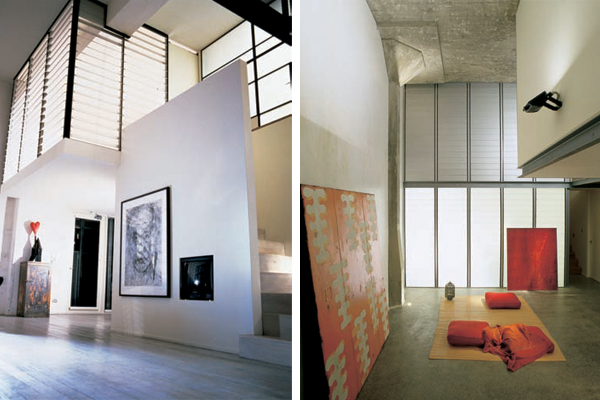
Left: St Francis Catholic School Hall, Surry Hills. Photo: Chris Cole
Right: 50-54 Anne Street, Surry Hills. Photo: Trevor Mein
Gregoriou attributes her success in the construction industry to her people skills. “There are probably only two things that I’m actually good at. One is being able to read people – I’ve learnt how to suss people out fairly quickly. The other is how to negotiate. One of my other strengths is that I can mix with anybody.” But she says, “I feel very much a loner,” although she adds that as she gets older, the less it matters.
On a practical level, she discovered along the way that “you can’t be a property developer on the side; you have to be totally committed.” Another lesson learnt was to keep the business “small and tight” and use consultants instead of employees. “You don’t have to be this big monstrosity to be profitable and successful.” The diverse strings to her bow are surely another contributing factor. “I always say I’m like a film producer, because I transcend the financial and the aesthetic, the creative, and I suppose there aren’t that many people who do that. I definitely understand both sides, and function. I think well at both levels.”
Her commitment to collaboration and a multidisciplinary approach is also fundamental. She works closely with the architects on her projects, and describes her long relationship with Dale Jones- Evans – with whom she lived, and often collaborated on projects for over 12 years – as one of great empathy on an aesthetic level and in the way they worked with people.
“I’ve [also] collaborated with [architects] Stephen Varady, Richard Goodwin, Sam Marshall, Kerstin Thompson and Ron Arad in London, Jean Nouvel in Paris, and with Marc Newson – we worked together on the design of the torch for the Sydney Olympics.”
Then there’s the sheer emotional energy of her motivation – her appreciation of the sensuous and her willingness to give it free rein. “If I see a painting, I can be in raptures. It’s very rare that you find architecture that touches you like that. I ask myself: Is it sensual? Does it work? Does it actually touch me in some way? Do I want to feel it? If it makes you laugh, if it makes you cry, it’s done something.”
Gregoriou draws the threads of her various talents, interests and passions together into a single strand in her life. “I’ve managed to incorporate my various passions into the way I work,” she says, specifically of the way she incorporates art into the buildings she develops, but in a general sense of the amalgamation of her professional and personal interests.
Her preoccupation with indigenous Australia has led to an extensive collection of Aboriginal art, and an involvement with various Aboriginal communities in the Central Desert and the Kimberley region. “I spend a lot of time out in the desert, I’ll go for six weeks at a time.
“I do travel a lot and I’m always looking at references, at urban design or art. I usually go to Japan every November. Japanese gardens are another passion – the Japanese aesthetic is so sensual, but at the same time really pared back. I’m in such a lucky position that I can incorporate all the things that I’m interested in into my daily life.”
She is equally enthusiastic about the experience of creating Sea Gods, the photographic book celebrating surfers and surfing in Australia, (published in 2000) that she co-wrote and produced along with Dale Jones-Evans and photographer Ashley Jones- Evans. “It took three years to put together,” she says, “but I had some pretty amazing experiences and being with all these people changed my life. It taught me just to appreciate really simple things, and that everything you do is joyous.”
Portrait by Anthony Browell.
Linda Gregoriou was featured as a Luminary in issue #19 of Indesign, November 2004.
INDESIGN is on instagram
Follow @indesignlive
A searchable and comprehensive guide for specifying leading products and their suppliers
Keep up to date with the latest and greatest from our industry BFF's!

CDK Stone’s Natasha Stengos takes us through its Alexandria Selection Centre, where stone choice becomes a sensory experience – from curated spaces, crafted details and a colour-organised selection floor.

From the spark of an idea on the page to the launch of new pieces in a showroom is a journey every aspiring industrial and furnishing designer imagines making.

Congratulations to Kerstin Thompson, 2023 recipient of the Australian Institute of Architects’ Gold Medal. We revisit Kerstin’s many accomplishments, among them being named an INDESIGN Luminary.

As NGV’s top design curators, Simone LeAmon and Ewan McEoin have big dreams for the design sector. And they’re coming at it with energy and ambition.
The internet never sleeps! Here's the stuff you might have missed
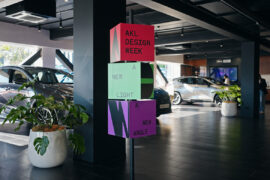
Auckland Design Week returns for its third edition in March, unveiling an expanded programme and a renewed focus on the relationship between people, communities and the places they shape.
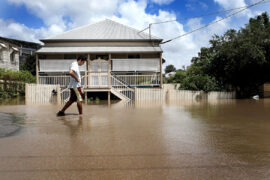
David Gole, principal at leading climate-resilient design practice JDA Co., comments on the intersection between heritage and climate in architecture.
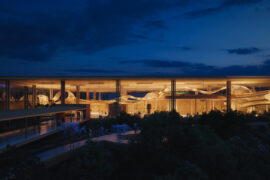
Recognised as winners at the INDE.Awards 2025, Enter Projects Asia in collaboration with SOM have received The Influencer award. Their work on Terminal 2 Kempegowda International Airport Interiors redefines the aesthetics of airport design through a monumental expression of biophilia, sustainability and craftsmanship.